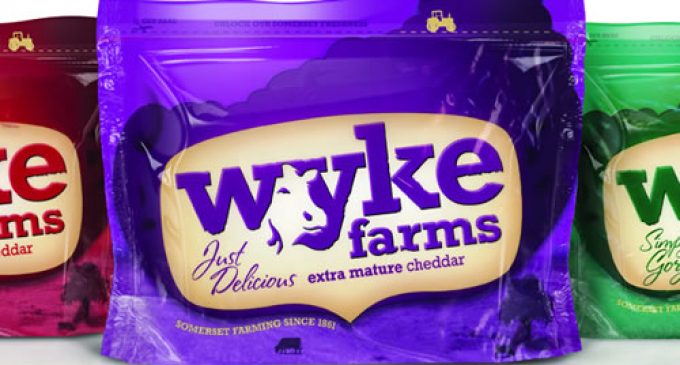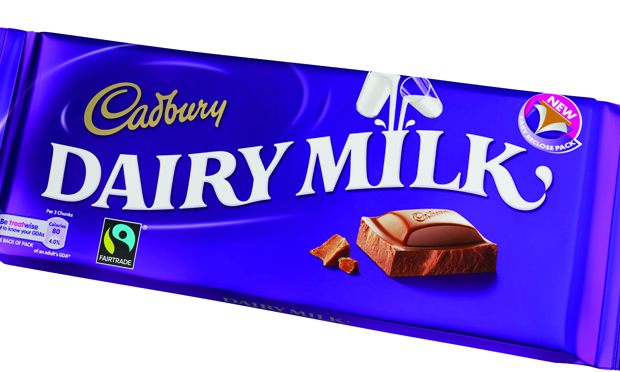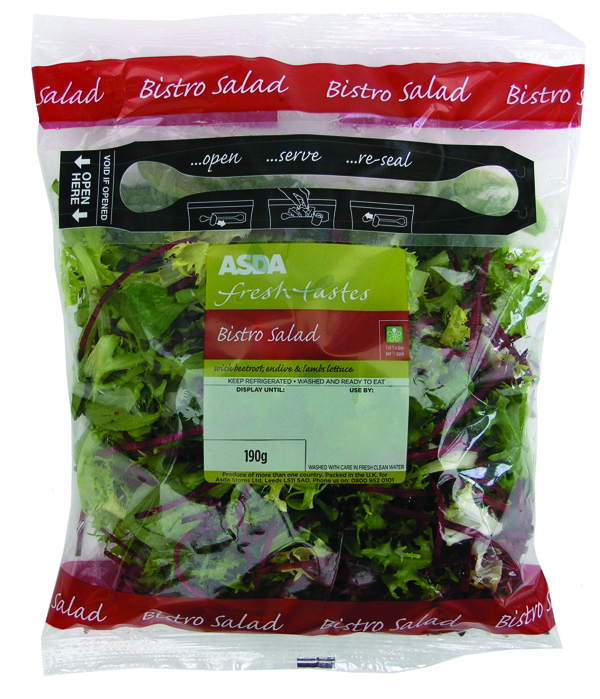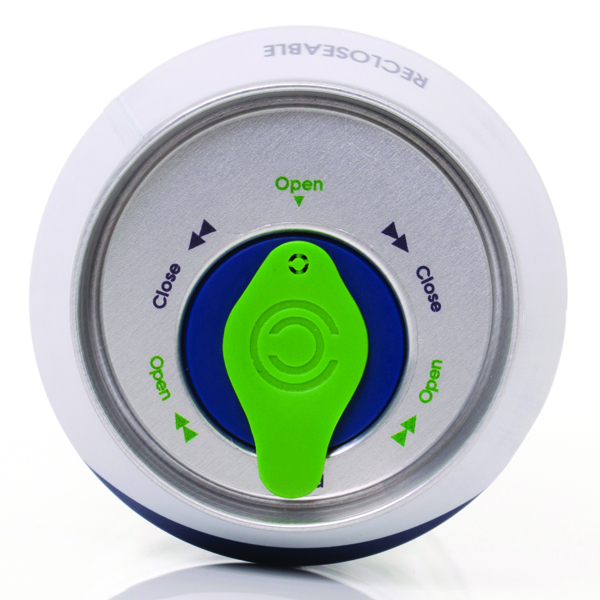Getting closure: resealability in packaging | Consumer IQ

Simon Creasey explores the growing trend to bring reseal technology into packaging – why are brands doing it, and what are the costs of getting it wrong.
The viewing public may not have realised it at the time, but a 2010 advert for Birds Eye frozen peas was a watershed moment for packaging. Rather than playing up the quality or freshness of the company’s products, the ad featured a cuddly toy polar bear popping up in the freezer cabinet to show off Birds Eye’s new ziplock packaging. It was the first time a major brand had used an expensive TV slot to boast about the reseal technology that it had built into its packaging.
Since then resealability has become a major focus for FMCG groups and retailers in response to what they see as growing consumer demand for this type of functionality.
A Wrap report published in March this year underlines the extent of consumer sentiment towards resealability. In the report, ‘Consumer Attitudes to Food Waste and Food Packaging’, which was produced in partnership with Incpen, the Packaging Federation, the Food and Drink Federation, Kent Waste Partnership and the British Retail Consortium, consumers indicated that reclosable packs were one of the three most useful packaging innovations to them.
Indeed, reseal technology is so important to consumers that it can even have an impact on their purchasing decisions. The report found that when asked to choose between two cheese products – one with reclosability built in and one without – 20% of consumers who plumped for the reclosable pack cited that function as the main reason for their choice.
As a result of these findings it doesn’t come as a surprise to hear that a number of brands and retailers have started to roll out resealable packaging across a number of different food and drink categories. But why has this trend come to the fore now, what are the main benefits for brands and consumers of going down this route and what are the potential pitfalls for those companies that get it wrong?
New categories
While it may be one of the hottest trends in the packaging industry at the moment, resealable packaging is clearly not a new concept. As David Baker, general manager at RPC Bebo UK points out: “We have been buying products in bottles and jars for years and we accept resealability as the norm for a wide range of products, from coffee to shampoo and milk to motor oil”.
However, in the last few years resealability has moved away from some of its traditional roots and broken out into entirely new product categories, driven largely by consumer trends that have been dictated by the desire to reduce waste and health concerns.
The latter factor was one of the main reasons Mondelez decided to invest £6m in developing new resealable flexible plastic packs for its Cadbury Dairy Milk, Whole Nut and Fruit and Nut chocolate bars, according to Susan Nash, trade communications manager at Mondelez International. The move, she says, “has helped those who would prefer to spread out consumption across the day rather than consume in one sitting”.
In addition to greater portion control, a key benefit of adding resealability to packaging is that it helps to maintain the quality of the product. “Freshness is obviously vital for cheese and other dairy products, but this is also a consideration for chocolate where consumers expect their product to be almost as fresh as the day it left the factory, even though chocolate is a fairly robust product. Perception is almost as important as reality in this case,” adds Nash.
Resealable mechanisms are also good for reducing food and packaging waste, says Richard Clothier, managing director at cheese producer Wyke Farms, which introduced a zip-pack seal to its blocks of cheese in 2009.
“Aside from being convenient and retaining the branding throughout the life of the product, reseal prevents the use of secondary packaging in the home such as cling film and foil,” he says.
The move has paid off for Wyke Farms; last year, the company saw value sales of its products grow by nearly 24%, according to Nielsen. But the technology doesn’t come cheap; Clothier estimates that the zip-pack costs Wyke £1m a year in terms of the extra pack size, the zip, bigger SRPs and bigger pallet footprints.
“Reseal costs the manufacturer more money, but we see it as a marketing investment in the same way that we would view investment in more flavours and better quality. It’s part of the package,” he says.
While Wyke and Mondelez have had to splash the cash to switch to new resealable packs, some companies that make the move shave pounds off their packaging spend, says Clive Jackson, UK sales director at Macfarlane Labels, which has developed resealable packs with Tesco, Morrisons and Sainsbury’s among others.
“We did a pack for Sainsbury’s and we actually ended up saving money,” he explains. “Previously, their picnic snack products were packed in quite a heavy-duty plastic barrel tub with a heavy-duty lid. However, since they changed their packaging, the product is actually cheaper to make than it was before. So it gives people the option of saving money when switching from one pack to another.”
Crucially for those brands that do end up having to spend a little more on their packaging to deliver resealability, research suggests that consumers are actually willing to pay that little bit extra for the added functionality, according to Payne managing director Martin Dallas.
“There’s clearly an opportunity here because we’ve had sight of a survey that showed that 34% of people questioned said they would be prepared to pay a bit more for resealability. This suggests that consumers recognise the value of resealability and how it delivers against competitive products,” says Dallas.
His belief is supported by Alaster Yoxall, principal research fellow at Sheffield Hallam University’s Art and Design Research Centre, who says that resealable features on packaging are generally well liked by consumers. “I once went to a presentation in the US where some disabled consumers were asked what their favourite packaging was and resealable packs came top,” he recalls.
Despite the growing consumer acceptance of reseal technology there is a danger that some resealable innovations have damaged consumer perception. One example cited by those contacted for this article are the ‘resealable stickers’ on the back of packets of rice and pasta; too often the packaging can open of its own accord as the sticker rapidly loses its stickiness.
“While there are some great and obvious to use examples like cheese or baby wipes, there are some poor examples where the reseal feature is on the back and we can’t actually see how it works,” says Yoxall. “Sometimes the obvious ones don’t always work as intended and people tear in the wrong places.”
Failed systems
As Yoxall suggests, there are numerous examples of resealable systems that have failed because they have been applied in an inappropriate manner, with some brands guilty of jumping on the bandwagon. Lara Klaassen, production director at design agency BrandOpus, advises that to avoid this trap, brands need to ensure that the attributes that resealability imbues – fresh, convenient, multiple use and so on – marry up with the product’s own values.
“Furthermore, to maintain a consistent perception, the brand should compare its overarching values with those of resealability,” says Klaassen. “Somehow a prestige brand, which relies heavily on heritage, tradition and prestige, doesn’t cue the use of resealability and convenience. New packaging technologies are great but it’s vital not to give out conflicting messages to consumers.”
That’s because if you get it wrong there can be serious repercussions, warns Stergios Bititsios, associate director for packaging and design at MMR Research Worldwide.
“If a resealability mechanism doesn’t work, negative reactions are to be expected. Frustration, anger and distrust are only some of the emotional consequences a dysfunctional resealing system will generate from a consumer perspective,” he explains. “The commercial implications for brand owners and retailers can be devastating, ranging from handling customer complaints and refunds, to becoming a topic of discussion on blogs and social media, to losing consumers’ loyalty. It’s better not to incorporate a resealability feature at all than add one that doesn’t perform.”
One of the main areas where there’s potential danger for brands to get it wrong when it comes to reseal technology surrounds seal integrity. “You cannot afford to compromise it as food waste will increase, complaints will increase, you lose trust with customers and finally on some products there are potential food safety risks,” cautions Mark Caul, technical manager of packaging for Tesco.
As a result, prior to any launch, packs need to be thoroughly tested to ensure that they are fit for purpose, says Caul. In addition to ensuring new packs are capable of fulfilling expectations, it’s also crucial that brand owners communicate to consumers the benefits of the changes that they’ve made to their packaging. “Clear on-pack messaging will help educate consumers and hopefully demonstrate to consumers that packaging actively reduces food waste,” says RPC’s Baker.
To ensure this message gets across, it is vitally important that the right balance is struck between educating consumers and not overcrowding packaging that is already covered in information.
“The challenges faced by marketers and retailers at times is ‘information overload’,” says Joe Schurtz, executive vice president of Perception Research Services (PRS). “Given the cost associated with resealing technologies, we have always counselled clients to isolate this message as the singular focus from the pack to ensure more immediacy of message delivery. Once the technology message is embedded – varying in time due to usage frequency – then other messaging can and should be emphasised while keeping, in a more subtle way, the highlighting of the resealing feature.”
Further take-up
Feedback from packaging manufacturers and brand owners alike suggests that there will be further take-up of reseal technologies in the future, with a number of categories ripe for innovation. Some reseal technologies designed for one category have already broken out into other areas.
Paragon Print & Packaging, for instance, introduced re-closable label technology in 2011 with the launch of the Asda i-close salad bag. Since then the company has developed the technology into a range of re-closable packs under the Re-close brand. Marketing manager Sian Bates says that a surge in demand for the technology has led to its roll-out across a range of private label food categories including fresh convenience, bacon, dairy, cooked meats and, most recently, produce.
Key to the success here is the level of innovation from packaging manufacturers, argues PRS’ Schurtz. “To grow, resealing technology will need to be adapted to other package materials. The density of plastic and paper used for cereal, snack chips, pasta, coffee and many other products will require different resealing approaches. Thus the growth will come from the resealing innovation rather than the current technology being applied to new categories.”
This is a view shared by Payne, which has seen a growth in interest in its resealing technologies that incorporate promotional print or security. “Tamper-evidence is often the missing link in resealability. If a pack is resealable, how do you know someone hasn’t tampered with the contents prior to purchase?” Dallas says. “By combining technology and print with function consumers can benefit from convenience and safety”.
There has already been plenty of the type of innovation Schurtz describes over the last 12 months or so. In 2012, Germany-based can2close launched a ‘c2’ resealable end – a new mechanism for beverage cans that the company claims is easier to use than existing standard stay-on tab openings and, more importantly, can be repeatedly sealed. And Rexam has attracted a lot of interest in its Fusion metal bottles, which feature a roll-over pilfer-proof closure.
“Within the drinks sector resealability has been around for quite some time but for metal packaging this is a relatively new development,” explains Kym Hamer, marketing manager for new product development at Rexam Beverage Can Europe.
So what of the future? Given the heavyweight brand names that have already invested heavily in reseal technologies, you can expect to see further developments in the area going forward, believes MMR’s Bititsios. “Now that several well-known brands such as Cadbury, Cathedral City, McVities, Pringles and Maltesers have already embraced resealability to their packaging and are seeing the benefits, others will undoubtedly follow,” argues Bititsios.
“For higher value brands and top-of-the-range own-label products resealability is more likely to start as a value-add proposition and will gradually become a commodity. For low-margin brands and value-range own-label products, resealability will probably remain a ‘nice to have’ feature as incorporating it would be likely to raise product cost to a level deemed too high for consumers.”
Over time the price of reseal technology will inevitably reduce as more and more brands take advantage of it. As a result, a lot of the cost barriers that are currently in place will be cast aside opening the technology up to smaller brands and potentially even value ranges. Although reseal technology is something that consumers like to have, the signs are that it could become a must-have. There are potentially lucrative rewards for the packs that get in on the act.






































